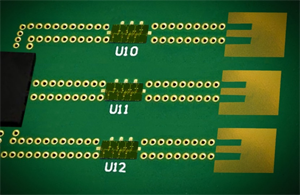At European Microwave Week (EuMW) in Nuremberg, German, Arralis announced the first commercial release of the company’s new Corvus range of Level 4-5 Autonomous chips. The 76-81 GHz Power Amplifier is the vital bridge between existing and emerging radars and beam-steering antenna solutions.
The Corvus PA is claimed to create longer detection ranges for radar solutions, meaning quicker identification of potential hazards. When integrated with Arralis antenna solutions it allows for longer range beam steering and the identification of pedestrians on and off the road. This power amplifier brings true level 5 autonomous driving closer to reality by detecting more and smaller targets, enabling faster decision making and most importantly tracking identified objects and taking the safest option.
76-81 GHz is widely seen as the future of autonomous car radars with the move towards the high precision era where the sensor, and not the driver, will make critical decisions in dynamic operating conditions. Radar at this frequency, unlike LiDAR, performs very well in inclement weather conditions such as rain and fog.
The Arralis Corvus PA is a 4-stage MMIC power amplifier that covers frequencies from 76 GHz to 81 GHz. The chip provides up to 25 dB of flat, stable gain, and a power output of more than 18 dBm from a 4 V supply voltage and <150 mA current. All bond pads and the die backside are gold plated. The Corvus PA MMIC is compatible with precision die attach methods, as well as thermo-compression and thermosonic wire bonding, making it ideal for MCM and hybrid microcircuit applications.
Speaking at the announcement in Nuremberg, Mike Gleaves, CTO of Arralis said, “This is just the start of a new and exciting phase of developments in autonomous driving that we are developing. Arralis is all about connected, autonomous mobility. To date that has mainly been in space and aircraft but now we are really excited to bring this technology into autonomous connected cars.”

